[Post revised 6/30/2023]
Key to Numbers in “The Declaration Mural” by Barry Faulkner
The final entry in a blog series profiling the 56 men who signed the Declaration of Independence. The series begins here. The previous posts can be found in this website’s Blog category.
AS THE NATION examines the role slavery played in its history, it is important to recognize that slavery was an issue in 1776. Among the men who eventually signed the Declaration, at least forty of them enslaved people or took part in the slave trade.
…We mutually pledge to each other our Lives, our Fortunes , and our Sacred Honor.
A New Hampshire slaver. A forgotten founder who died in debt and disgrace. A college president. A legendary bullet maker. Jefferson’s teacher –and a murder victim. Last but not least among the 56 signers. A “YES” following the entry means the Signer enslaved people; “NO” means he did not.
•William Whipple (New Hampshire) Often described as a 46-year-old “merchant,” he was more precisely a sea captain who made a fortune sailing between Africa and the West Indies — in other words, the merchandise was human cargo.
He also enslaved people and one of those men, known as Prince, accompanied Whipple throughout his illustrious career as an officer in the Revolution. It was thought that Prince was the Black man depicted in the famous “Washington Crossing the Delaware” painting. But that is not accurate because Prince and Whipple were far from the action that night. Whipple later served in a variety of state offices in New Hampshire and legally manumitted Prince –who also went by the name of Caleb Quotum — in 1784. Whipple died in Portsmouth in 1785. YES
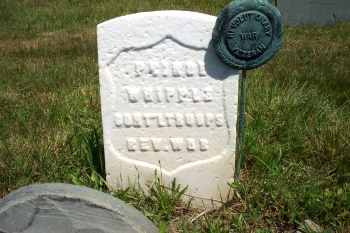
Gravestone of Prince Whipple https://www.blackpast.org/african-american-history/whipple-prince-1750-1796/
•William Williams (Connecticut) A 45-year-old merchant, he was a veteran of the French and Indian War who was under command of his uncle Ephraim Williams, who was shot and killed in the war. (Ephraim Williams’s will provided funds for the founding of what became Williams College in Massachusetts.) Planning to follow his father as a minister, he attended Harvard but instead opened a store and became a successful merchant.
Williams married Mary Trumbull, the daughter of Connecticut’s Royal Governor. Governor Trumbull was a Royal Governor who supported the patriot cause and was a friend and adviser of George Washington. One of Mary Trumbull’s brothers, John Trumbull, became the most famous painter of the American Revolution, and another later became Connecticut’s Governor.
William Williams was not present for the July vote but signed the Declaration and was a tireless supporter of the war effort. After a long career in public service, he died in 1811, aged 81. NO
•James Wilson (Pennsylvania) Scottish-born, he was a 33-year-old lawyer at the time of the signing and one of the most important Founding Fathers you probably never heard of. A key supporter of the Declaration, Wilson was among the signers and Philadelphia elites who were attacked in his home during the war in a riot over food prices and scarcity.
Wilson was also a key member of the Constitutional Convention, credited with several significant compromises. Although hopeful to be made Chief Justice of the new Supreme Court, he was appointed an associate by Washington. But land speculation ruined him and he ended up in debtor’s prison, like his colleague Robert Morris (See series post #7) before his death in disgrace at age 55 in 1798, an embarrassment to his Federalist friends and colleagues. NO
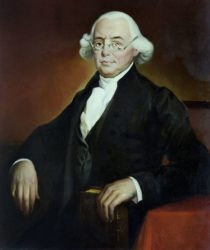
https://dontknowmuch.com/wp-admin/post.php?post=8045&action=edit The official portrait of Supreme Court Justice James Wilson.
•John Witherspoon (New Jersey) Another profoundly influential immigrant, the Scottish-born minister was the 53-year-old president of the College of New Jersey (later Princeton) where his hatred of the British influenced many students including notable schoolmates Aaron Burr and James Madison. He lost a son at the battle of Germantown in 1777, but continued his career in Congress. After the war, he attempted to rebuild the college and was a prime mover in the growth and organization of the Presbyterian Church. He died in 1794 in Princeton, where he is buried, at age 71. YES
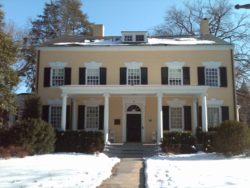
A photograph of Maclean House, also called the President’s House, at Princeton University. Built 1756. https://commons.wikimedia.org/wiki/File:Maclean_house.jpg
•Oliver Wolcott (Connecticut) A 49-year-old lawyer, he was also a veteran of the French and Indian War who was not present for the vote and signed at a later date. Wolcott was in New York when Washington’s troops tore down a statue of King George III after hearing the Declaration of Independence read. He is credited with the plan to melt down the lead statue and turn it into bullets for the war effort. He served in the Connecticut militia during the Revolution and held a series of state posts after the war including as governor of Connecticut at his death in 1797, aged 71. YES
•George Wythe (Virginia) A 50-year-old lawyer at the signing, he may have made his greatest mark as a teacher of law to Thomas Jefferson who lived with Wythe while at the College of William and Mary –as well as later students including James Monroe, future Chief Justice John Marshall, and congressman Henry Clay, earning him the title “America’s first law professor.”
He died in 1806 , around 80, apparently murdered by a nephew by arsenic poisoning. The nephew was perturbed that Wythe had emancipated his enslaved people and planned to give half his estate to one of those emancipated people. The nephew was acquitted of murder after the testimony of a formerly enslaved woman was disallowed because she was black. The nephew was convicted of forging his uncle’s checks. YES
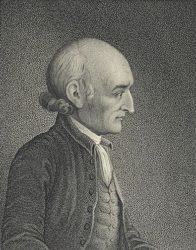
George Wythe, Signer of Declaration of Independence New York Public Library Digital Gallery (Digital Image ID: 484381)
Read the story of James Wilson and the Philadelphia Riot in America’s Hidden History.
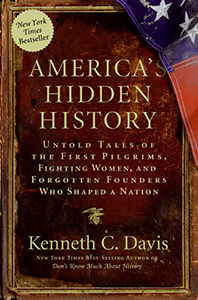
Read more about slavery in the founding in my book IN THE SHADOW OF LIBERTY
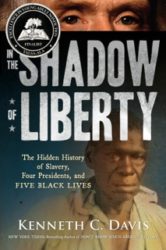
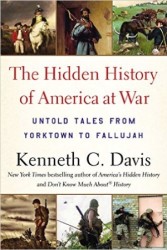
Now In paperback THE HIDDEN HISTORY OF AMERICA AT WAR: Untold Tales from Yorktown to Fallujah